Published on March 11, 2021
by Thomas Van Hare
Most people know of Chuck Yeager, the pilot who first broke the sound barrier in 1947 in his bright orange Bell X-1, a plane he nicknamed “Glamorous Glennis” after his wife. Today, the X-1 hangs in the Smithsonian’s National Air and Space Museum in Washington, DC. Yet while Chuck Yeager is famous, few know the name of Colonel Ivan E. Fyodorov. He was the first Russian to break the sound barrier.
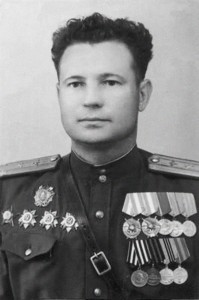
Like Yeager, Ivan Fyodorov had a long flying career. Like Yeager, he was born in a rural backwater — Yeager came from Myra, West Virginia, and Fyodorov came from the village of Kamenskaya (now the city of Kamensk-Shakhtinsky). Also like Yeager, Fyodorov became an ace in World War II. He was nine years older than Yeager, however, and therefore, had an earlier start in aviation.
WATCH THE VIDEO!
What set Fyodorov apart from Yeager were not his actual exploits, but his reckless boasting. He claimed far more planes shot down than were ever confirmed. As for being the first Soviet pilot to fly faster than Mach 1 — perhaps his greatest achievement — he never thought much about that.
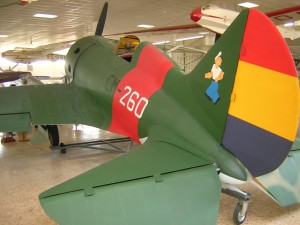
Fyodorov’s combat career began as one of the first twelve pilots sent to Spain in the late 1930s to fight Franco’s fascist government. While piloting an I-16 Rata fighter, he shot down a pair of Savoia-Marchetti SM.79 Sparviero aircraft while flying in the Cartagena area.
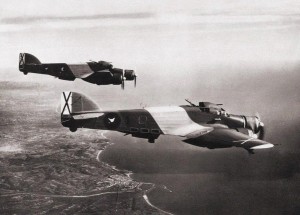
Official Soviet documents state that Fyodorov flew more than 150 sorties in Spain, though his own records show just 131. A document found in his official personnel file (Personal file No. 8803) states that during his time in Spain, he “flew 286 sorties, conducted 36 air battles, in which he showed exceptional examples of air combat.” It continues with a claim that he himself wrote, “I personally shot down 11 enemy aircraft of the 13 claimed by the group.” That latter claim is suspect, however.
When the Second World War broke out, Fyodorov was sent to the Far East to help train the Chinese to fly Russian-made I-16 Rata fighters. From November 1940 until his return to Russia in February 1942, he saw no combat. Finally, he was assigned as a test and check pilot at the Ordzhonikidze Aircraft Plant Number 21, located in the city of Gorky. There he did check flights of LaGG-3 fighters as they came off the assembly line.
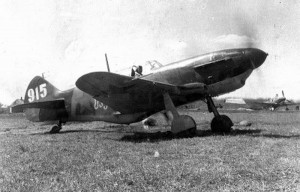
He requested repeatedly to fly against the Nazis, but was denied. Ultimately, in July 1942, after six months of test flying work, he signed on to deliver one of the newly produced LaGG-3 fighters to the Kalinin front. Once there, he simply stayed to fly against the Germans. The district air commander, Mikhail Gromov, chose not to arrest him for dereliction of duty, however, as he was short of skilled pilots. At the time, the Soviets were suffering heavy losses against the German Luftwaffe.
Commanding a Shtrafbat Penal Squadron
Fyodorov had committed a crime and though he hadn’t yet faced trial, it was an open and shut case. As a result, Gromov assigned him to command one of the Soviet Union’s penal squadrons, also known as “Shtrafbats”. These were composed of men who had committed crimes, were convicted, and had been sentenced to be executed. Their death sentence, however, was deferred until after the war.
Instead they were expected to die in combat for the “Rodina”, or Motherland. Then, at least their families would hear that they were heroes rather than criminals who had been executed at the front. Gromov probably figured that Fyodorov wouldn’t probably survive to face trial anyway. The Shtrafbats were not much better than Soviet gulags and although Fyodorov wasn’t a convict, it was still a bad assignment.
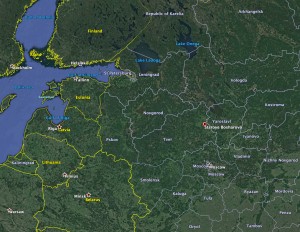
For years, the Russians denied the existence of their penal squadrons. However, since the fall of the Soviet Union in 1991, records have come to light proving that they did exist after all. Fyodorov’s unit, for instance, boasted 64 pilots and an unknown number of ground crewmen and administrative support staff.
To ensure discipline, Fyodorov’s command was backstopped by an NKVD detachment, who were brutal in enforcing discipline and killing those who did not follow orders perfectly. Shtrafbat pilots were not allowed to disengage from air combat, but rather were required to throw themselves at the enemy no matter what the odds, even ramming enemy aircraft when they ran out of ammunition. Their mission was to fly until they died, without official credit for anything they achieved.
In September 23, 1942, on hearing of an approaching air raid, Fyodorov ordered his squadron to take off from their airbase at Bosharovo. The other pilots in the penal squadron, however, played a trick on him and didn’t take off. They watched as Fyodorov raced down the runway and flew into the air alone. They expected that he would be killed. Probably, they considered it fair retribution for the woeful treatment they received in his unit. Only once airborne, did Fyodorov realize that he was alone and badly outnumbered. He faced 18 Junkers Ju 88 bombers and six escorting Messerschmitt Bf 109 fighters.
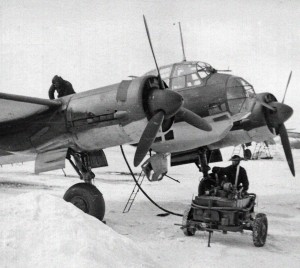
Rather than flee, he dove straight into the enemy formation, firing his guns. The Germans scattered but then one German fighter got on his tail. He was shot up badly, injured on his face and left leg. He dove to escape and when the raid ended, he returned to land. He boasted of four kills that day — one Messerschmitt and three Ju 88s — but none were ever confirmed.
A month later, while still healing, Major Fyodorov (his rank at that time) claimed another 16 German aircraft shot down. When his superiors suspected he was lying, Fyodorov got each kill confirmed with testimony from front line Soviet soldiers, though he obtained that in exchange for a few bottles of vodka each.
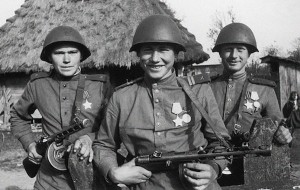
Still, he was an ace and his skills were highly valued. It was easier to look the other way, even as Fyodorov appeared to have a penchant for telling ever taller tales. His confirmed kills were enough to warrant the Order of the Patriotic War, which was awarded on May 1, 1943, by the Armed Forces of the Kalinin Front No. 21. According to the award documentation, he had flown 82 sorties at Kalinin, participated in six combats, and had destroyed five enemy aircraft on the ground and six in the air.
In April 1943, as the Soviet Union was facing heavy losses in the air, the Soviet Air Force reassigned him from the penal squadron to command the 273rd Fighter Aviation Division. Most of his pilots there were new recruits, fresh out of flight school, and very inexperienced. Less than three months later, in July, they were thrown into combat at Kursk. They suffered heavy losses. Of the 70 pilots assigned to him, 50 were dead by November.

His Division claimed 509 enemy destroyed, 266 in aerial victories. Once again, Fyodorov proved both an excellent pilot and a survivor. During this period, he personally was credited with shooting down three Junkers Ju 88 bombers, one Do-217 bomber, and three Messerschmitt Bf 109 fighters. He claimed many more, but these were never confirmed.
Some years after the war ended, Fyodorov claimed that during this period he had shot down Germany’s greatest ace, Erich Hartmann. While Hartmann was flying in that sector and was in fact shot down, no records support Fyodorov’s personal claim. Notably, during the war, he made no such claim.
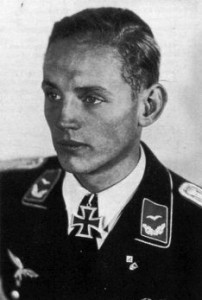
By December of 1943, Fyodorov had logged 6,700 hours of flight time, making him one of the most experienced pilots on any side in the war. He pioneered a new maneuver, one which might be best described as a World War II equivalent of the modern Russian “Cobra” maneuver. When a German plane got on his tail, he would pull back hard on the stick to go vertical and hang on his prop. With that, his plane would hang nearly motionless in the sky. The German pilots would try to follow but would overshoot before diving away to seek other targets. Even if he couldn’t turn the tables and chase them down, at least he survived to fight another day. He taught his pilots the trick too and they later stated that it saved many from getting shot down.
Yet controversy haunted Fyodorov all the more. With the front lines in chaos, supplies were hard to find. Apparently, Fyodorov saw an opportunity to work the black market and line his own pockets. When Lieutenant General Roman Rudenko was informed about it, he called for Fyodorov’s prosecution. He wrote, “For unworthy behavior of a senior officer, participating in extortion and fraud, as well as performing unsatisfactory work, I petition for the dismissal of Colonel Fyodorov from his post and request a downgrade in his rank.”

As well, Rudenko wrote that Fyodorov “likes to boast of past exploits.” With every passing month, he appeared to be claiming more and more enemy aircraft shot down — none of which were confirmed. Though Fyodorov apparently managed to escape justice, he was lucky — Lt. Gen. Rudenko was a sinister figure who later presided over secret trials of dissidents and even ran a post-war German concentration camp (though with German prisoners instead, whom he worked to death). An odd coincidence is that he served as the judge who sentenced Francis Gary Powers, the U-2 spy plane pilot who was downed over the Soviet Union in 1960.
The Soviet Union was still in such desperate need of good pilots — and Fyodorov was an ace anyway — that they simply looked the other way. Again, nobody thought he would survive the war anyway. For the next year and a half, he survived and lead his Air Division against the Nazis in a drive that took him almost all the way to Berlin.
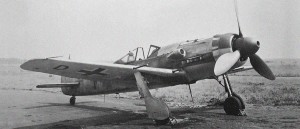
On April 25th, 1945, in one of his last missions of the war, while flying 60 miles west of the German capital, Fyodorov shot down two enemy Focke-Wulf Fw 190D fighter planes. Those would be his last kills of the war. This time, they were confirmed.
As the war came to an end, by order of the Armed Forces of the 2nd Belorussian Front No. 670, dated June 6, 1945, he was awarded the Order of the Patriotic War of the 1st Degree. His award claimed that since the beginning of the war, he had shot down 11 enemy aircraft. His divisional commander, Colonel Dodonov, despite granting the award, made a special mention in the award itself of Fyodorov’s “excessive boasting”.
How many planes he shot down overall will probably never be known, but it is certain that he was an ace. Perhaps he shot down 15 or 18 enemy aircraft, though he claimed that number just in a single 45 day period of 1942.
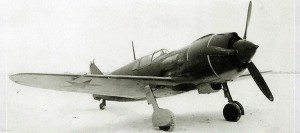
During the war, he flew the LaGG-3, Yak-1, Yak-3, Yak-7, Yak-9, and the Lavochkin La-5. That he survived at all was something of a miracle. Fyodorov’s personal claims of enemy aircraft shot down continued to increase. For instance, he later claimed that in his first 45 days of 1942, while leading his penal squadron, he had shot down 18 German aircraft. Virtually everyone doubted his claims, however, and his dishonesty undercut further advancement to higher command.
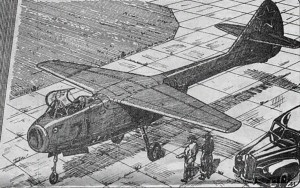
After the War
Soon after the war ended, in October 1945, with a chest full of medals, he got an assignment as a test pilot for the SA Lavochkin Design Bureau at Aircraft Factory Number 81. Lavochkin’s test program was funded under the Soviet Union’s Ministry of Aviation Industry. The assignment fit him well as Lavochkin was the very company that had produced the La-5, one of the types he had flown successfully in combat.
Fyodorov became one of the first pilots to test Soviet Union’s new jet fighters. He tested the La-150, La-150M, La-150F, La-156, La-174TK, the radically new swept wing La-160, and the La-168, the first Soviet aircraft to be able to achieve 1,000 kmph.
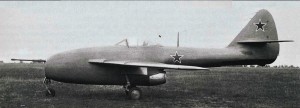
In early 1948, he was assigned to test the new La-15 jet fighter, a type that would be later exported to almost all of the East Bloc air forces. That plane, however, was nearly his undoing. Once while on a landing approach in the La-15 jet prototype, when just a few meters above the runway on his final approach, he lowered the flaps. On one wing, the flaps went down, but they stayed up on the other side — what is called a “split flap” malfunction. Instantly, his plane went into an uncontrolled roll. Ever cool-headed, he simply let it continue around until it was back upright, then retracted the flaps and landed straight ahead. Later, he laughed it off as just another day in test flying.

On March 5, 1948, due to his courage and dedication to performing the most dangerous test flying work, Fyodorov was declared a Hero of the Soviet Union.
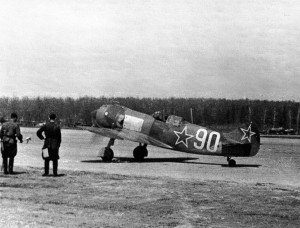
Breaking the Sound Barrier
Next, along with another pilot named Captain Oleg Sokolov, he was assigned to test the latest Lavochkin model, the La-176. The jet was a follow on to the La-15 that he had tested a year earlier.
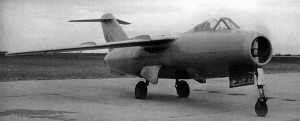
The La-176 wasn’t a research plane, but rather the company’s entry in the design competition for the Soviet Union’s next generation jet fighter of the upcoming 1950s. Borrowing from German engineering and captured equipment, the Soviets had added swept wings and wing fences to the design. While the MiG-15 won the competition, the La-176 achieved something far more impressive.
Together with Captain Sokolov, Colonel Fyodorov flew over 100 flights at the Soviet test center at Saki airfield in the Crimea. Early on, they found that the plane could almost achieve supersonic flight in a dive. This was important as the Soviet Union needed desperately to break the sound barrier and keep up with America’s rapid advances in aviation. With each subsequent flight, improvements were made to the engine and wings. Over the next half year, the plane’s speed steadily increased.
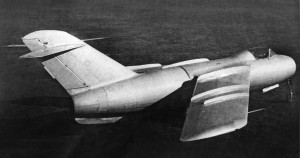
The Flight
Finally, on December 26, 1948 — just 14 months after Chuck Yeager’s famous flight — Fyodorov took off in the La-176. Following the usual flight profile, he climbed to just over 9,000 meters of altitude, leveled off and accelerated to the plane’s top speed. Then he pushed forward on the stick and entered a long, shallow dive.
As the altitude wound down, his airspeed indicator reached just above Mach 1. He chopped the throttle and gingerly pulled back on the stick to level out at 6,000 meters of altitude. Smiling, he returned to land.
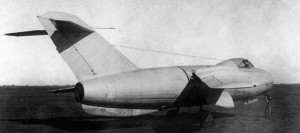
A Russian report later described the feat, “From a great height, the pilot accelerates the La-176. You can hear a tedious low whistle that increases with speed. The plane is hurtling toward the ground. The plane begins to shake as if it has caught a fever. And then — silence! That is what it is when breaking the sound barrier.”
Still, Soviet engineers at the Saki test center didn’t trust the plane’s airspeed instruments. They designed a new, specially shaped pitot tube to provide better supersonic readings, but then assigned the next flight not to Fyodorov, but to Captain Sokolov. He took the La-176 to 10,000 meters of altitude, 1,000 meters higher than Colonel Fyodorov’s flight, accelerated to top speed, pushed over into a shallow dive, and watched the altimeter wind down.
When the plane passed through 7,000 meters of altitude, the airspeed indicator registered past the speed of sound. Sokolov chopped the throttle and pulled out at 6,000 meters of altitude, then returned to land. Post flight telemetry confirmed that he had reached Mach 1.021, about 1,105 kmph or 597 knots.
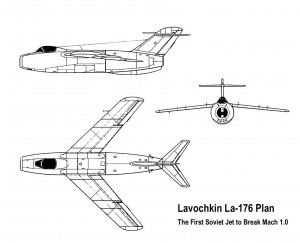
The results were carefully checked and the engineers were finally satisfied — Captain Sokolov had done it. Based on the results of Sokolov’s test flight, the engineers confirmed that Fyodorov had also broken the sound barrier. He was first Soviet pilot to have done so, but there was no bonus, no medal, and no fame. Instead, Fyodorov was just assigned to test fly the Lavochkin jet fighter design — and another after that.
Retirement and a New Career
By 1954, his long years in combat, multiple wounds, and the stresses of test flying finally took a toll on his health. The flight surgeons did what no German had ever achieved — he was downed permanently. Though Fyodorov was upset, most likely their ruling saved his life. In the years that followed, many of the Soviet Union’s best pilots were killed in test accidents.
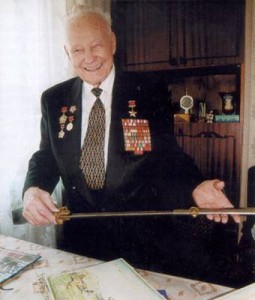
He spent the next twenty years working in the Soviet Ministry of Foreign Affairs, retiring after a stint as a diplomat in the Soviet embassy in Tunisia. True to form, as time passed, he told ever taller tales. His claimed record of kills grew.
He told others that he had flown during the Korean War, shooting down many American F-86 Sabrejets. Official records proved he never left the Lavochkin test program. Near the end of his life, he claimed to have had 134 aerial victories, a figure that would make him the greatest Soviet ace of all time. His own peers, however, publicly lambasted him. The PRAVDA newspaper ran an editorial quoting two of the other Soviet test pilots, S.A. Mikoyan and A.A. Shcherbakov, regarding Fyodorov’s wartime claims. They stated flatly: “… his stories are fiction, often absurd and not confirmed by anything.”
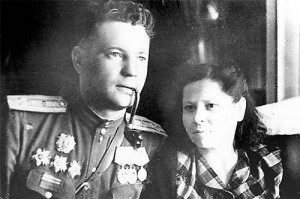
The most incredible thing is that he shrugged off the fame that should have come from being the first Soviet pilot to break the sound barrier. That feat meant nothing to him. He called it “ordinary work”.
Ordinary work, indeed.
+ PLEASE SUPPORT US THROUGH PATREON! +
+ OR MAKE A DONATION THROUGH PAYPAL! +
